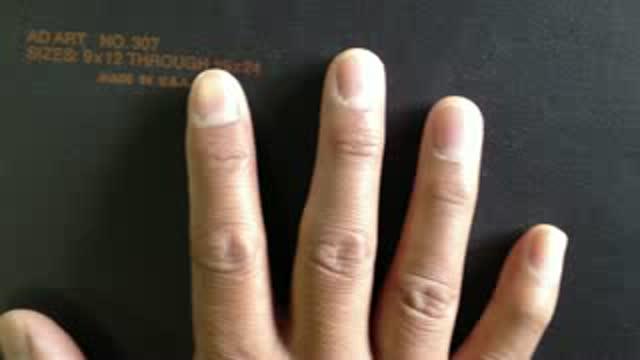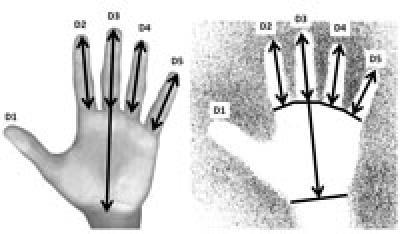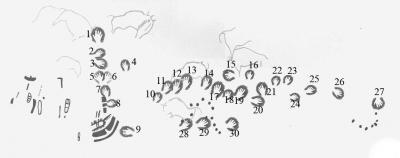Unfortunately, most cave art photographs lack size indication, making it difficult to determine relative size and the sex of the artist. Snow visited a number of caves and the few existing images with size indications. He also collected hand images from people with European and Mediterranean ancestry. He published his results in the current issue of American Antiquity.
Snow found he needed a two-step process for the modern hands to successfully differentiate men from women. He first measured the overall size of the hand using five different measurements. This separated the adult male hands from the rest. Snow found that step one was 79 percent successful in determining sex, but adolescent males were classified as female.
Step two compares the ratios of the index finger to the ring finger and the index finger to the pinky to distinguish between adolescent males and females. For the known hands, the success rate, though statistically significant, was only 60 percent. There is too much overlap between males and females in modern populations.
"I thought the fact that we had so much overlap in the modern world would make it impossible to determine the sex of the ancient handprints," said Snow. "But, old hands all fall at or beyond the extremes of the modern populations. Sexual dimorphism was greater then than it is now."
Sexual dimorphism implies that males and females differ. Not only were male hands larger, Snow found that development of the fingers, how long they are relative each other, also differs significantly.
The first step in the process showed that only 10 percent of the handprints on cave walls in Spain and France were left by adult males. The second step indicates that 15 percent were placed by adolescent males, leaving 75 percent of the handprints female.

Dean Snow, emeritus professor of anthropology, Penn State, discusses handprints on cave walls and the methods he used to determine if they were male or femaile.
(Photo Credit: Curtis Parker, Penn State)
"By just eyeballing, I'm more accurate with the modern hands than the formulas I developed," said Snow. "There are some variables there that I'm not aware of yet. The algorithms are pretty good, but they could be better."
Snow also looked at modern American Indian hands and found that the rules and algorithms developed for Europeans did not work. He notes that different populations require separate analysis.

Images of male and female hand with measurements that determine gender.
(Photo Credit: Dean Snow)

Friso de las Manos, El Castillo.
(Photo Credit: Dean Snow, Penn State)
Source: Penn State